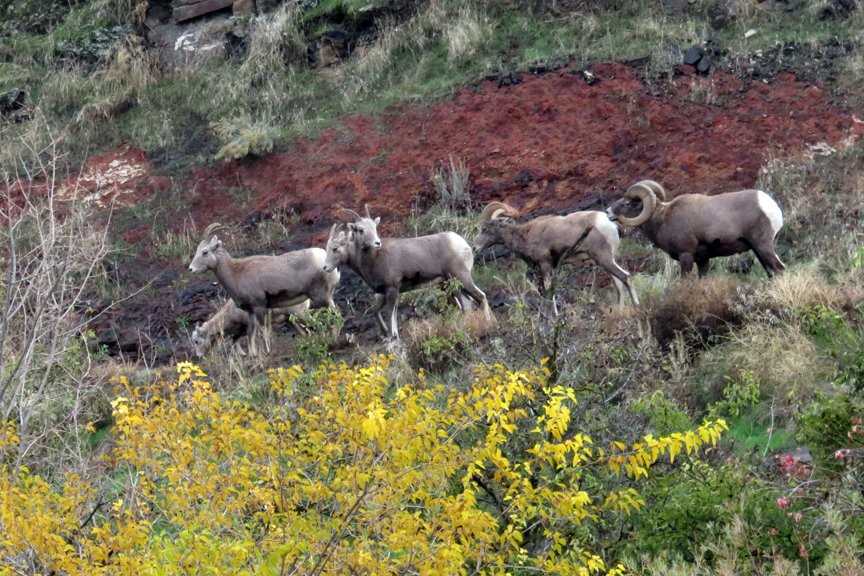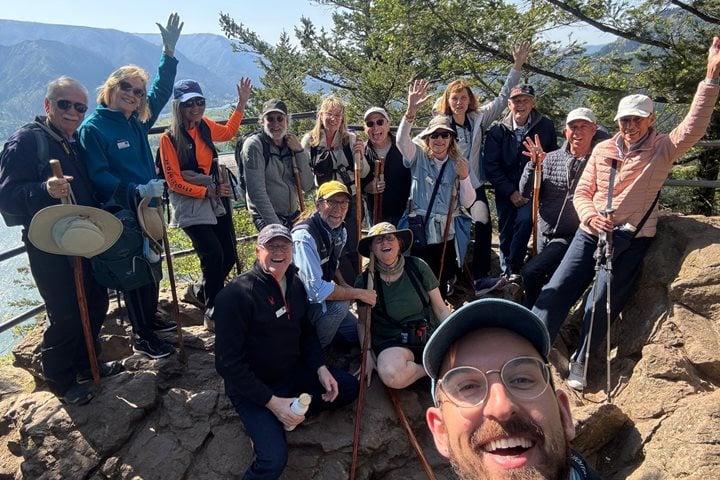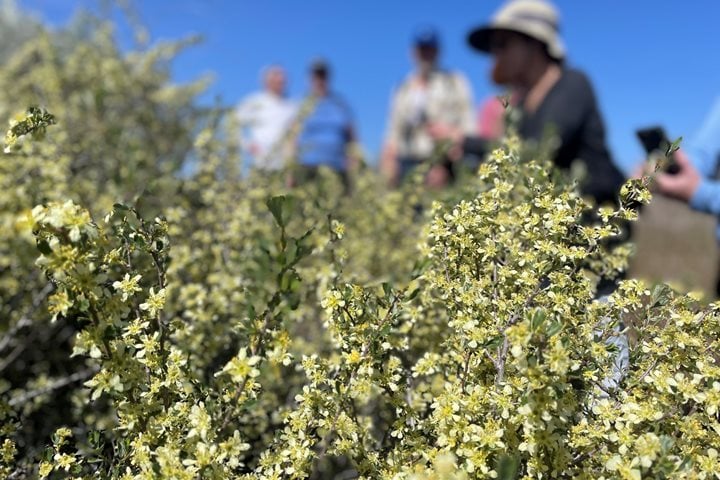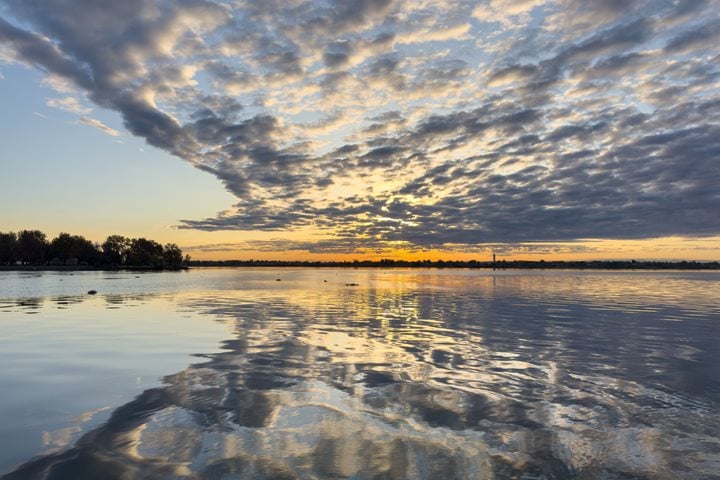Under cloudy skies at 0600 hrs the National Geographic Sea Bird was making her way toward Clarkston, Washington, with an ETA of 0703 hrs. Captain Kay was at the helm and we docked right on schedule. Immediately after breakfast we boarded jet boats for an exciting journey into Hells Canyon. Rugged and remote, Hells Canyon is the deepest, river-cut canyon in North America; here the Seven Devil Mountains rise as high as 8,000 feet above the Snake River. Our first stop was across the river from Asotin (Place of Eels), Washington. Here we marveled at the most amazing outcrop of columnar basalt where perfect hexagonal columns rise above the river. This is part of the Columbia River Basalt Province through which we have been sailing. Soon after this interesting stop, our jet boat captain spotted a small herd of Rocky Mountain bighorn sheep on the steep hillside above the river and we stopped for a good look at these beautiful creatures. It is rutting season and a magnificent ram with heavy and curved horns was with a herd of ewes and a younger ram.
As we proceeded on up the river, high cliffs formed of layer after layer of basaltic lava flows rose high above us. Fall colors brightened the landscape as mulberry trees burned bright gold along the shore and sumac smoldered crimson on the slopes. A bald eagle eyed us from its perch in a Ponderosa pine tree while great blue herons stood sentinel-like along the shores waiting to make a meal of any hapless fish that swam near them. Rowdy belted kingfishers darted by, making their rattly calls as they careened alongside our boat. Mallards, American coots, and Canada geese swam near the shores. A flock of perhaps a dozen wild turkeys foraged under a mulberry tree.
Soon we were passing the mouth of the Grande Ronde River, leaving the basalt flows and officially entering Hells Canyon and exotic terranes. Now the rocky cliffs on either side grew even steeper and more rugged. We kept an eye out for wildlife and saw a few mule deer. At Cache Creek in Hells Canyon National Recreation Area we stopped for our morning break and refreshments. Here is a small museum and in the yard an orchard of apple, fig, plum, and walnut trees—a green oasis among the usually parched hills. The October rains have come and green grass was shooting up all around. We saw signs of turkeys and of black bears—the bears have left seed-filled scat as their calling cards.
Off again, and soon we came to the mouth of the Salmon River, the legendary “River of No Return”. We learned that the pale, sandy beaches we have been passing are formed of sand carried into the Snake by the Salmon River. This sand sparkles with flakes of white mica that comes from granitic rocks through which the Salmon River has passed in Idaho. Not too much farther upriver we came to the narrowest part of the Snake River—only about 45 feet wide here and the shining river was rushing through in a rapids. This was our turn-around spot and we headed downstream to the Spring Creek Ranch, a Nature Conservancy property, for a hearty lunch. We dined on a large porch with views up and down the river and in the large apple orchard saw a herd of mule deer. They were not much disturbed by our presence and many photos were taken. On the way downriver we again spotted our herd of Rocky Mountain bighorn sheep, which had moved upslope but not too far for photos. Our last stop on the river was to see an enigmatic petroglyph, a number of figures chipped into stone long ago and not fully understood today.
Back at the National Geographic Sea Bird, many of us took a motor coach to the Nez Perce National Historic Park and learned about the history and culture of the Nez Perce people—whose aid to Lewis and Clark and their Corps of Discovery was so important to the success of the expedition. Our evening was completed with the camaraderie of social hour, the guest slide show, and Recap, and dinner with our new friends.







